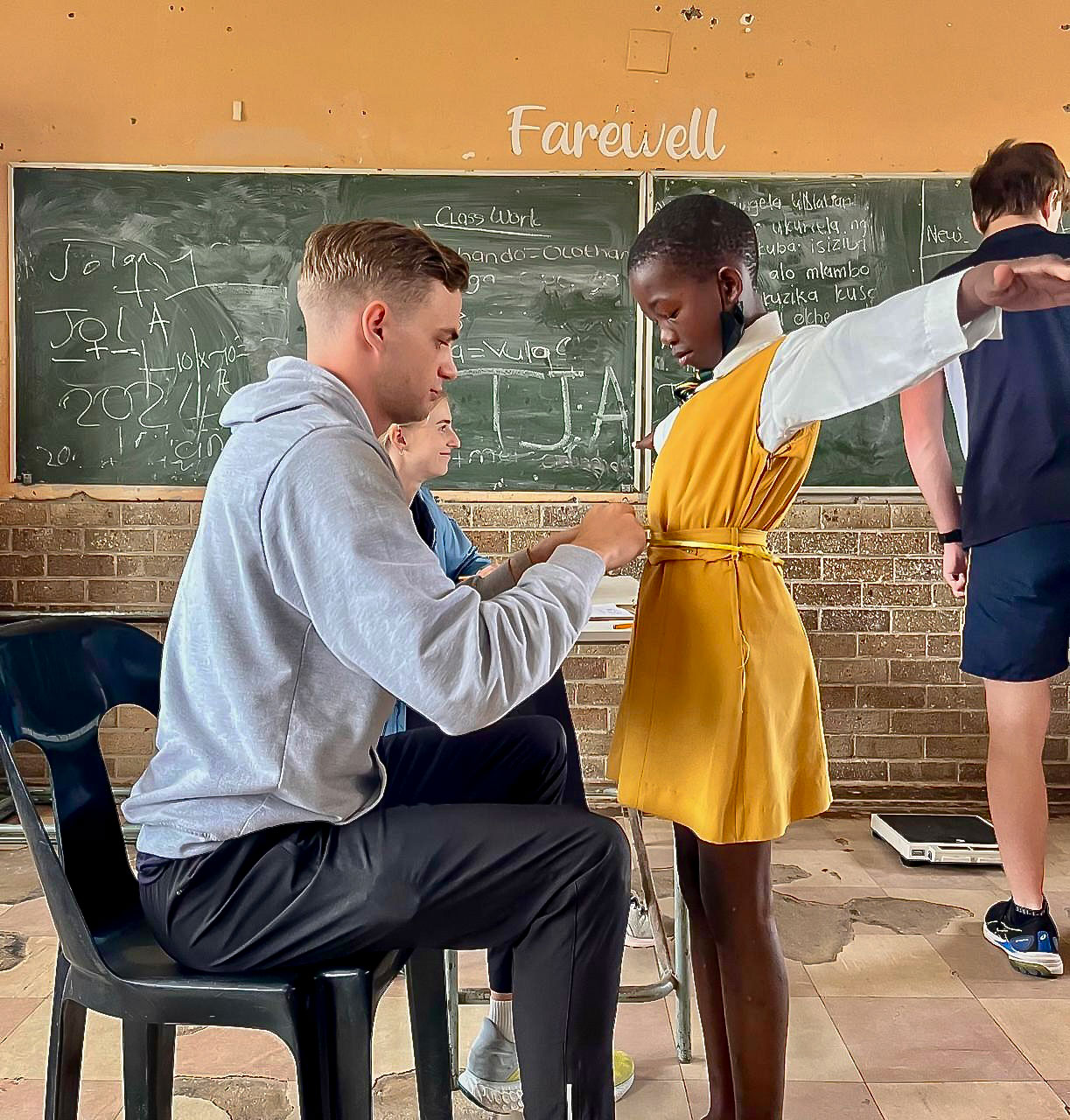Nelson Mandela University’s human movement science department is spearheading the Eastern Cape arm of a national study that could change the way South Africa diagnoses and prevents childhood hypertension – a silent condition that can cause heart, kidney and vascular damage before symptoms even appear.
Childhood hypertension, or persistently elevated blood pressure, often has no symptoms but can set the stage for serious health issues in adulthood.
Now, a groundbreaking national study is tackling this problem head-on, with the Nelson Mandela University team leading the provincial focus and gathering the largest dataset of any participating institution.
This largest South African dataset on children’s blood pressure could transform diagnosis and save lives. The goal is to develop the country’s first locally developed, evidence-based blood pressure norms for children, replacing international charts that don’t reflect South Africa’s diverse population.
The head of the human movement science department, Dr Aayesha Kholvadia, is leading the Eastern Cape research as part of the national initiative to establish normative blood pressure values for South African children.
“This work is critical for improving early detection, prevention and long-term management of cardiovascular disease, particularly in underresourced communities where children are disproportionately affected,” she explains.
Boots on the ground
The Childhood Hypertension Consortium of Africa study began in 2022 and will run until 2027, involving more than 22,000 children between the age of five and 18.
Nelson Mandela University joined in 2021, when the consortium was established, leveraging years of community health outreach in public schools and its partnerships with the Department of Education.
As the Eastern Cape lead, Kholvadia oversees a multidisciplinary team that includes postgraduate students, academic staff and trained undergraduate assistants, particularly from her department and the biokinetics programme. The national study is led by Professor Ruan Kruger.
“Our work is community based and positions the university as a leader in child health research in public schools,” Kholvadia says. “We are committed to transforming health outcomes in underresourced communities.”
/file/dailymaverick/wp-content/uploads/2025/09/Students-Screening-2.jpeg)
The team visits quintile 1-5 schools across Nelson Mandela Bay, with parental consent and ethical approval in place. Pupils undergo anthropometric and blood pressure screenings. Four readings are taken per child and sophisticated algorithms calculate the average, ensuring accuracy.
Why early detection matters
If left unchecked, high blood pressure in children can cause early vascular ageing, heart strain and kidney disease, and increase the likelihood of hypertension in adulthood.
“Early intervention saves lives,” Kholvadia stresses. “Children with undiagnosed hypertension are at greater risk of complications in adolescence and adulthood. Our goal is to shift from reaction to proactive prevention, especially in vulnerable communities.”
Primary hypertension in children is often linked to poor diet, obesity and physical inactivity, while secondary hypertension can stem from conditions like kidney disease or hormonal disorders. Urban and higher-income schools tend to report a higher prevalence, but the Eastern Cape’s rural and peri-urban areas are not immune, especially since lifestyles change.
/file/dailymaverick/wp-content/uploads/2025/09/Students-Group-Shot-1.jpeg)
Science meets service
The study is more than just data collection, it is active health promotion. Alongside screenings, the Nelson Mandela University team runs wellness talks, distributes educational materials and demonstrates physical activity routines.
Undergraduate biokinetics students play a key role, leading exercise sessions and engaging with pupils and staff. “By integrating screening into our outreach programmes, we combine teaching, research and service,” Kholvadia adds. “It’s a model that benefits both the community and our students’ learning.”
Any child with a concerning blood pressure reading receives feedback and referral for follow-up care, ensuring that no warning signs are ignored.
Leading the numbers nationally
South Africa currently relies on US and European blood pressure norms for children – a mismatch that can lead to underdiagnosis or misclassification. This project will produce the first African-specific reference charts, adjusted for age, sex and height.
“Our leadership role showcases an interdisciplinary model of research and health promotion,” Kholvadia says. “By engaging directly with learners, parents and educators, Nelson Mandela University is not only contributing to science but also shaping policy and practice for a healthier future.”
/file/dailymaverick/wp-content/uploads/2025/09/Dr-Aayesha-Kholvadia-profile-pic.jpg)
Looking ahead
The study aims to develop Africa’s first evidence-based blood pressure guidelines for children, improve early diagnosis and reduce long-term cardiovascular risks.
The short-term goals include completing data collection in Nelson Mandela Bay and boosting community awareness. The medium-term goals are to publish the normative blood pressure charts and assess the impact of interventions. The long-term goals involve integrating blood pressure screening into the national school health system – even adding it to the Road to Health booklet – and advocating for policy changes mandating routine checks in schools.
For Kholvadia the message is clear: “Childhood hypertension is silent, deadly but preventable. With the right tools, policies and community engagement, we can make sure it never goes unnoticed again.” DM
A life saved
A Grade 6 pupil from a local quintile 1 school recorded dangerously high readings during a Nelson Mandela University screening. Referral led to a diagnosis of an underlying kidney condition – a potentially life-saving intervention. “We’ve also had parents thank us for tips that helped them start exercising together at home,” Kholvadia says.
What is childhood hypertension?
- Defined as consistently elevated blood pressure in children under 18;
- Assessed relative to percentiles for age, sex and height;
- Above the 90th percentile = elevated;
- Above the 95th percentile = hypertension;
- Example: A systolic blood pressure above 120mmHg (millimetres of mercury) in a 10-year-old may be cause for concern, depending on growth parameters.
Beth Cooper Howell was contracted by Nelson Mandela University to write this article.




 A Nelson Mandela University student conducts a screening as part of the Childhood Hypertension Consortium of Africa study involving 22,000 children across South Africa. (Photo: Supplied / NMU)
A Nelson Mandela University student conducts a screening as part of the Childhood Hypertension Consortium of Africa study involving 22,000 children across South Africa. (Photo: Supplied / NMU)